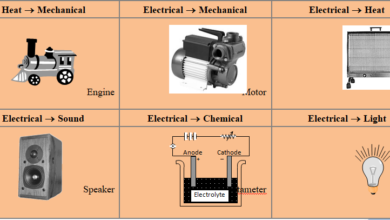
High tensile fence for horses resembles livestock fences in many ways, except they are often taller and offer better vision.
Three, four, or five strands of high-tension wire make up a standard High tensile horse fence. The top wire and a few others are frequently insulated. Horses will keep their distance and avoid contact with the fence if it is energized and stays that way while they are in the pasture.
Purposes of High Tensile Fence for Horses:
Beautiful horses running with their tails raised or peacefully grazing in lush green pastures surrounded by freshly painted fence are frequently depicted in pastoral scenes of country life. These fences are truly stunning, but they also have useful functions.
Horses need to be safely contained, but fences also provide them a chance to go about and graze. Horses are more likely than most other livestock to hurt themselves in fences because of their innate flight instinct.
Additionally, a fence that is safe, sturdy, and appealing is justified by the fact that many horses are of quite high value. Horses can easily see painted rail fences, which are not only attractive to humans.
Height of the High Tensile Fence for Horses:
When startled or herded, horses are more athletic and more likely to jump a fence than to go through it or under it. For horses, perimeter pasture fences should be at least 5 feet high (60 inches).
A basic guideline is that the top of the fence for corrals, stallion pens, and paddocks (small pastures or turn-out spaces less than 2 acres in size) should be at eye level with the horse’s head in a natural upright position.
Fences separating pastures can be as high as 4.5 feet (54 inches). The fence’s bottom should protrude 6 to 8 inches above the ground. This is crucial for wire mesh fences since horses are less likely to paw at them and more likely to jump over them.
Selecting the High Tensile Fence for Horses:
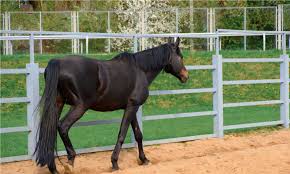
Whatever material the fence is constructed of, it must be extremely visible, robust, appealing, and safe for horses to interact with.
Rail Fences:
Horse farms frequently use rail (also known as “plank” or “board”) fences because they are aesthetically pleasing, highly visible, and relatively secure. Fences in this category include those made of painted or treated timber planks fastened to posts with nails or screws, split rails with rounded ends that fit into post holes, PVC plastic boards, and vinyl-coated wooden planks.
Typically, treated pine or oak are the two types of wooden planks. A minimum of 0.25 lb/ft3 of CCA (chromated copper arsenate) should be applied to pine boards (0.4 or higher if wood contacts the soil). To preserve the wood and enhance the fence’s beauty, you can paint the fence using water-based paint, black asphalt paint, or coal tar paint.
High Tensile Polymer Fence:
A “high-tensile polymer fence” is a type of fence that resembles a rail fence but is really made of wire. The “rails” are made of four to six inches wide vinyl material that is wrapped around two to three high-tensile steel wires.
These fences are very sturdy, less expensive than rail fences, and quite similar to rail fences in terms of appearance and visibility. However, to keep the right tension, they are wire fences, which require periodic tightening.
You can electrify certain high-tensile polymer wires to increase security, but this requires the use of a particular coating, so you’ll need to request this when you buy the fence.
Rubber Fences:
Horse fencing has previously been made from rubber belting, rubber strips from used tires, and conveyor belts. These have the apparent advantage of being soft and yielding, reducing injury to horses, but maintaining them requires a lot of work because they sag over time, especially in the summer heat.
Horses do have a tendency to chew on rubber, and this has led to colic and/or impaction in some goods produced with nylon threads.
Electric Fences for horses:
A variety of materials are used to create electric fences. Among them are aluminum wire, smooth high-tensile steel wire, vinyl-coated high-tensile steel wire, and steel wires woven into the vinyl tape. Certain types are regarded as permanent barriers.
They are roughly 112 inches wide, which makes them very noticeable to horses. Ten 0.016-inch-diameter stainless steel wires in one item are interwoven with polyethylene yarn.
Once a horse has come into contact with the fence, electric fences are quite successful at controlling it. However, clear visibility is crucial and is not a feature of electric fences constructed with smooth steel wire. One or more strands of vinyl-coated wire or high-tensile vinyl tape should be added to the fence to improve visibility.
Fence Posts:
Wood posts: In Georgia, wooden posts are widely available. Wood posts provide a number of significant advantages, including strength and resistance to bending, misalignment, and withdrawal. Compared to earlier treatments like creosote and Penta, these posts are tougher, have a greenish hue, and stay longer (pentachlorophenol). This hardness characteristic tends to lessen staple or nail pullout.
Steel posts: When used for wire fences, steel posts have four key advantages over wooden ones. They are fireproof, less in weight, easier to push into the ground, and less expensive. They also aid in grounding the fence, reducing lightning damage. Steel posts range in length from 5 to 8 feet. Steel posts come in a wide range of varieties, with prices and quality that are significantly variable. Carefully check post specs to ensure that you are comparing posts of comparable quality.
Electric Fence Controllers:
Because of the short charge period, controllers are both safe and efficient. Although the charge is strong, it doesn’t last long enough to burn the skin or harm the heart. Modern low-impedance controllers can power multi-wire fences across extended distances and are less impacted by some contact with grass or other plants than older controllers. Some chargers actually slow down the growth of vegetation by igniting any nearby vegetation.
Both battery-powered and 120-volt AC types of controllers are offered. The 120-volt devices offer a clear advantage when 120-volt electricity is available because you don’t need to purchase or replenish batteries. These units have very low operating costs, typically less than $1 per month.
Gates for High Tensile Fence for Horses:
Make sure the gate is strong and secure because horses frequently gather around the gates. Gates should complement the fence in terms of aesthetics. Horse gates are frequently made of steel tubing or pipes.
Gates ought to be at the same height as the top of the fence. Gates into a pasture should open wide enough for vehicles, such as tractors, mowers, wagons, and fertilizer trucks, to enter the pasture (a minimum of 14 to 16 feet wide). Any gate that a horse will pass through must be at least 4 feet wide, but if you anticipate the need for equipment to pass through the gate, make it at least 8 feet wide.
Construction for High Tensile Fence for Horses:
Fence building calls for appropriate methods and common sense judgment, just like most other construction and maintenance tasks around the farm. Each fence job has a unique set of challenges. For every fencing project, a few fundamental concepts make effective beginning points. Here are a few to think about.
Establishing the Fence Line:
Locate property lines precisely where a permanent fence will be built along one. Here, a mistake could cost you dearly. You can now build the fence line after clearing the area of any trees and vegetation.
End- and Corner-Post Brace Assemblies:
The corner-post and end-post assemblies are the most crucial components of any wire fence. They serve as the framework on which the fence is constructed. When a wire is first stretched, there may be a 3,000-pound pulling force at the corner or end. Winter cold can cause the wire to contract, bringing the strain to 4,500 pounds.
Fence Post Setting:
Digging holes and packing soil around posts takes longer than driving posts into the ground. When posts are not driven, you must dig holes and compact the earth around them using a tiny rod with a diameter of about an inch.
Although this method is typically not as effective as driving posts, it is crucial to thoroughly tamp mud around the posts to provide the posts most amount of strength. Using a guide wire or string, insert the post into the hole, aligning it with the other posts. Then fill the hole with a few inches of earth and compact it.
Installing Wire on Fences:
Installing and stretching wire should typically be done in parts, moving from one corner and/or brace post assembly to the next. When putting wire, proceed from the bottom up at all times. Install the lowest wire first, followed by the next highest, and so on. Except where aesthetics is crucial, attach the wire to the side of the post closest to the livestock.
Electric Fences:
Having a strong grounding system in place is one of the greatest methods to guarantee an electric fence will work as expected. An electrical charge needs to leave the “hot” or electrified wire, pass through the animal, and then return either through the earth or a grounded return wire in order to function.
Maintenance for High Tensile Fence for Horses:
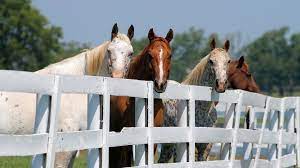
A well-maintained fence will provide years of trouble-free service. Incorporate a few of the following ideas into your routine maintenance program:
- When anchor post assemblies exhibit signs of weakening, repair or replace them.
- Wooden fences should be painted as needed for both aesthetics and longer life.
- If necessary, use a solution of chlorine bleach to clean PVC or vinyl fences.
- When necessary, repair damaged wires and refasten loose wires to posts.
- Don’t forget to stretch the fence wires appropriately. For high-tensile fences, this will be required once or twice per year.
- Maintain the fence line’s cleanliness, especially around electric fences.
- Regularly check the voltage of electrical fences. If voltage starts to drop, look for issues with the fence.
- Create and adhere to a regular inspection schedule for any required upkeep.
American Association of Vocational Instructional Materials, Planning Fences, 1980.
About Horse Fence Posts:
The most secure posts to use for horse fences, in our opinion, are made of treated wood or fiberglass. While fiberglass posts offer visibility and flexibility, treated wood posts offer higher strength. Avoid using steel T posts because they can quickly ground an electric fence and provide a danger to horses if they rear up close to them.
About Centaur Horse Fence:
The Centaur high tensile fence for horses combines high tensile strength with a polymer coating to promote visibility and, consequently, safety. Three, four, or five strands of high tensile wire make up a basic high-tensile. The top wire and a few others are frequently insulated. Horses will keep their distance and avoid contact with the fence if it is energized and stays that way while they are in the pasture.
About Barbed Wire Fence:
Never use barbed wire fencing to enclose a horse. Visibility is one of the many issues with this kind of fencing, since horses may find it challenging to see the fence despite its numerous strands. Sometimes barbed wire fencing is added to top of other fencing materials to prevent horses from climbing over the top to the side with healthier grass. Horses’ faces, heads, and necks may be wounded or lacerated by barbed wire that is attached to fencing at the top.
Electrobraid High Tensile Fence for Horses:
Horse owners who don’t want to fence their animals with steel wire products should use electro braid. It is made of polyester fiber, the same kind used in seatbelts. It contains a copper conductor on its surface that allows electricity to flow. It is lightweight, safe, easily handled, and highly noticeable. It comes in white, black, and speckled varieties on a 1000′ coil and is guaranteed by a 25-year warranty.
Permanent Electric Horse Fence:
An efficient equine High Tensile Fence for Horses is made of three to five strands of high tensile wire, along with one or two sections of electrified Super RopeTM*. A fence is safer for horses when it has Super RopeTM, a big diameter white poly wire, white fiberglass SuperrodTM Posts, and SuperlifeTM Battens. For wood line posts and corner posts, heavy-strength insulators are available in either white or black that can be used with high-tension wire or Super RopeTM.
Posts in an electric fence for horses are spaced closer together to further increase visibility. Six strands (including one or two of Super RopeTM) can be put with even smaller post spacing for boundary fences that are more secure.
Coated high tensile horse fence:
This 12.1/2 gauge plastic coated wire is more appealing, safer, and more visible than typical high tensile fence wire. When the electric wire is also used on the fence, this wire can be placed with post spacings of up to 50 feet for a cost of roughly 12.5 cents per foot (63 cents per foot for 5 lines). The Class 3 galvanized (zinc-coated wire) Kencote high-tensile core is projected to last 30 to 60 years.
Horse Rail (4″, 5″, or 6″):
Horsetail has a lovely wooden board appearance, doesn’t require painting, and has a lifespan of more than 20 years. The rail is made of class 3 galvanized fence wire that has been pre-straightened and molecularly bonded to polyethylene with a minimum PSI of 200,000. Because it flexes rather than shattering on impact, it is safer than wood. Since it is difficult to get hooked or cut with the smooth, wide plastic rails, there is a lower danger of damage than with wire. Posts can be spaced up to 12 feet apart.
Each rail has a breaking strength of more than 3000 pounds, and a 30-year limited replacement guarantee is included. Horsetail is offered in widths of 4″, 5″, and 6″ and comes in the colors white, black, and brown. In addition to safeguarding the horse and rider from harm caused by the conventional railing, this rail’s flexibility, smoothness, and strength also provide a sturdy, beautiful rail that needs no upkeep.
Board Fence:
If you want a rustic wood fence appearance, Poplar Board Fence is perfect. Installation and maintenance are simple. The high price of wood items, which make up the majority of the fence materials, is a drawback. Although the lifespan is shorter than that of other fence types, installing an offset electric wire to avoid cribbing may increase it. The cost per foot of rail for a three-rail fence might be 50 cents. (For a three-rail, $1.50 per foot).
High Tensile Smooth Wire:
Consider this fence if you want something with a long lifespan, excellent strength and resilience, low cost, and simple upkeep. Superior animal control is provided by simple electrical both within and outside the fence.
When deciding whether to install this kind of fence for horses, one must take into account the relative lack of sight and the danger of entanglement and harm.
Electric Twine – Portable Horse Fence:
The installation process is quick and simple. It is easy for an animal to escape if it becomes entangled because visibility is good. To extract the greatest feed from the pasture, extensive grazing management is helpful. This method is also great for portable corrals (temporary fencing) on trail rides. Each foot of twine or tape costs between $1 and $3.
Electric Rope Fence:
The rope has a high breaking strength and can withstand abuse while creating a very visible electrified fence. It is simple to hand knot and does not require braced end posts. Post spacing can be wider with the round rope because it doesn’t whip up in the wind as much as electric ribbons do. Rope typically costs between $6 and $8 per foot, depending on its conductivity and thickness.
Livestock Fencing – Cost of High Tensile Fence for Horses:
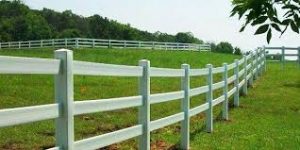
One of the most expensive things associated with animal grazing is fencing. The cost per foot, overall cost, and annual ownership cost are significantly influenced by the type of fence built. The number of materials and labor needed to build the fence is also influenced by the form of the paddocks.
In this article, the price of installing a quarter-mile (1,320 feet) straight perimeter fence is compared to the price of installing four different permanent fence types as well as temporary interior fencing. These include temporary inside fencing and high-tensile non-electric, electrified, and barbed wire fencing.
Various types of fencing materials can be used to create a variety of fence configurations. The following five configurations are compared generally using the examples from this paper.
Woven wire fence:
Two 8-inch posts with a 4-inch cross-brace at each end are used as a brace in the woven wire fence (see Table 1). Steel “T” posts and pressure-treated wood posts with a 4-inch diameter serve as the posts in the space between the bracing. With one strand of barbed wire at the top, each post is 12 feet apart.

References:
University of Missouri’s Forage Research Center, Linneus, Missouri, J. Gerrish, Fence Systems for Grazing Management
Best Fence for Horses:
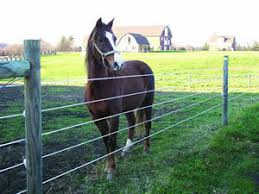
High tensile fence for horses options come in a wide variety. Many people use wood fencing, but wood needs upkeep. Despite their weakness, PVC and other polymers are functional. Field fences are sometimes used, although they have poor breaking strength and a high risk of entanglement. For cattle, barbed wire is an alternative, but for horses, it’s an accident waiting to happen. Electricity alone can function but is less long-lasting and containment-friendly. Excellent but pricey alternatives include pipe fences and pipe and cable.
Options for fences come in a wide variety. Many people use wood fencing, but wood needs upkeep. Despite their weakness, PVC and other polymers are functional. Field fences are sometimes used, although they have poor breaking strength and a high risk of entanglement. For cattle, barbed wire is an alternative, but for horses, it’s an accident waiting to happen. Electricity alone can function but is less long-lasting and containment-friendly. Excellent but pricey alternatives include pipe fences and pipe and cable.
Best Horse Fencing Options:
Before you add or replace fencing on your horse property, familiarise yourself with the advantages, disadvantages, and costs of the various materials you can choose. Making informed decisions can enable you to increase the safety, worth, appeal, and utility of your fences. Let’s talk about the building of safe fencing before we examine the wide range of options.
Horse Fence Safety:
No matter the type of fence or the way it is built, one of your aims should be to show the horses a smooth side. Occasionally, do-it-yourselfers make the error of mounting boards on the outside of fence posts, making it simple for horses to knock them loose. A horse that runs along the fence line could also get hurt by the exposed posts. You might not be able to prevent this exposure with cross-pasture fencing; in such circumstances, employing an electric fence wire to build a psychological as well as a physical barrier gives a safe alternative.
fence-building items? Several of our favourites are as follows:
- Wire Fencing
- Polytape
- T-Posts
Posts:
Good fence posts that are put correctly are what give a fence its strength and integrity. Rather than digging and backfilling, a skilled fence builder may be able to drive round wooden posts into the ground, packing the posts more firmly.
If possible, if you are building the fence yourself, think about having a contractor lay the posts in this manner. It’s worth the extra cost because the fence is tougher, lasts longer, and requires less maintenance.
Metal T-posts:
To reduce the risk of a horse being impaled, cover metal T-posts with plastic mushroom-shaped coverings if you must use them. Better still, get caps that will enable you to add an electrified mesh ribbon to improve sight and deter horses from reaching over to nibble. Horses pushing against the wires or mesh while grazing or socializing over the fence frequently damage the wire fencing and can bend fence posts.
Barriers:
The fence you build should be sturdy enough to hold a horse in place, resilient enough to withstand a charge from the animal, and provide a psychological deterrent that prevents a horse from trying to escape in the first place.
Wood board fence:
Wood board fences are highly regarded for their beauty, visibility, and durability. High initial costs ($4 to $5 per linear foot for a conventional, unpainted four-rail fence) and a high maintenance requirement because of horse chewing, weathering, etc. are disadvantages. If startled, horses may break through, and risks such as nails and splinters may exist.
PVC board fence:
PVC boards with internal ribs can withstand breaking but are made to separate under pressure. Not the ideal barrier for an animal weighing 1,000 pounds. To ensure that horses respect the PVC cage and remain contained within it, an electrical wire system is advised.
Pipe steel for a high tensile fence for horses:
A fence made of pipe steel is very durable and sturdy. These fences, however, have no give, and a horse that runs into them risks injury. Fortunately, these occurrences are rare due to strong exposure. Planning must be precise since when the fence is built, adjustments will be challenging and expensive. The need for repainting could arise, however, maintenance is typically low.
FAQs: High tensile fence for horses
What is Centaur® Flexible Horse Fencing Systems?
Horse enthusiasts should use Centaur® HTP® (High Tensile Polymer) equine rail fencing because it is horse-friendly. Flexible horse fence systems keep your horses safely inside. You can select a system to suit your needs with our well-liked Centaur HTP, CenFlex HTP, Hot Rail HTP, PolyPlus, and White Lighting horse fence.
Centaur fencing material, which was developed using a proprietary polymer blend for an extraordinarily strong and flexible horse fence, absorbs pressure without breaking or weakening. There is nothing on the fence railing that may shatter or splinter and hurt your horse, so it remains safe and secure inside your pastures.
Because of the Centaur® flexible fence rail’s design, if a horse pushes or rushes the fence, it will yield just enough to stop an injury without endangering the ranch’s perimeter. Our unique steel-reinforced bar and high-tensile polymer bracket are unbreakable. Centaur equine fencing is guaranteed to do its job and keep your horses secure for many years to come.
What to Read Next:
- Best Pets For Toddlers
- Best Small Pets for Kids
- Best Small Cuddly Pets
- Types of Exotic Pets
- Best Small Pets for Cuddling
- Best Low-Maintenance Pets That Like to Cuddle
- How to Choose Cute Cuddly Animals
- Cute and Cuddly Stuffed Animals
- Best Pet Birds for Beginners That Talk
- Best Talking Bird Species
- Choose the Right Pets That Like to Cuddle
- The Best Pet Birds for Kids
- Best Pet Insurance Affiliate Programs
OutLine: high tensile fence for horses- high tensile wire horse fence- fence for horses -high tensile polymer fence -coated high tensile horse fence – high tensile fencing wire price – high tensile fence wire – high tensile fence supplies – high tensile fence tensioner- high tensile fence insulators – high tensile fence for goats – high tensile fence post – high tensile fence – high tensile fence wire- high tensile fencing – high tensil fence – high tensile electric fence – tensile strength -how to build a high tensile electric fence – how to build high tensile fence – hi tensile fencing – high tensil fence – high tensil fencing – high tensile fencing – high tensile wire fencing – high tensile fence for goats – best electric fence for goats- how to build electric fence for goats – what is tensile strength – tensile stress – high tensile fence – ultimate tensile strength – high tensile fence for horses





